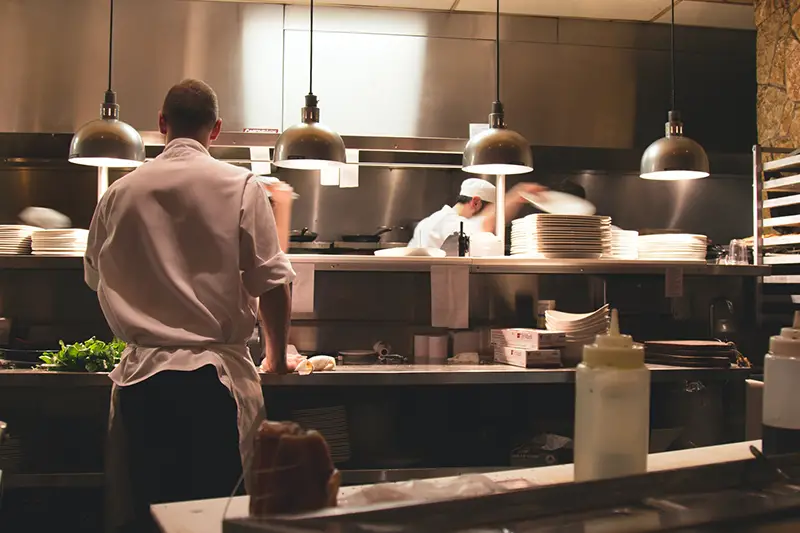Click here to get this post in PDF
Commercial kitchens are a hub for all sorts of cooking and food preparation. They come in all different shapes & sizes, depending on the scope of work you do. In a business that relies heavily on having a commercial kitchen, the design is vital to ensuring that your business runs smoothly. This is because commercial kitchens need to be designed with the customer in mind.
They need to be designed with an open floor plan to see each step of the process. The kitchen also needs to be designed to make it easy for staff to navigate and for workers to access all necessary tools easily. It is important that you layout your kitchen according to the workflow and workflows of your staff members. For example, you want everything within arm’s reach at all times so that cooking can happen quickly and smoothly without any extra steps or wasted time. The design should also consider how materials flow through the kitchen worktops and how cooking surfaces are used. So, if you decide to design a commercial kitchen, here are a few points on how to design a well functioning commercial kitchen:
Commercial Kitchen Layouts: Which One is Right for Your Needs?
A commercial kitchen layout is designed to fit the needs of a food service business, from cooking and storage to dishwashing and customer service. Therefore, it is essential to ensure that your commercial kitchen layout suits the needs of your business. There are three types of commercial kitchen layouts – linear, U-shaped, and L-shaped. These layouts offer different benefits for different types of businesses. In some cases, they will use a 3d kitchen design tool to see these layouts, but it is important to consider other factors like cost, overall square footage, and kitchen design features.
Kitchen Planning Starts from Prioritizing Your Requirements
First, you need to figure out what your priority is. Is it cost, efficiency, or time? Once you have figured that out, you need to find a balance between these three factors. You should also consider how much food will be prepared in the kitchen and how often. This will help you determine the size of the kitchen or whether it’s best to build a new commercial kitchen instead of remodeling the current one. It’s important to remember that regulations and codes must be considered before starting any construction project. Make sure to consult a professional on this issue before doing anything else.
How to Achieve a Modern, Functioning Kitchen Layout?
When it comes to your commercial kitchen layout, you need to consider how you will be using the space. The kitchen is a space that needs to be used in the most efficient way possible. For example, running a restaurant, your kitchen layout should allow for quick food preparation and easy client interaction. On the other hand, if you are running an ice cream shop or an office cafeteria, maybe having your cooking area in view of customers might be useful.
You should also keep in mind what kind of supplies and equipment you will need to store and where they will go. If you want to enhance the look of your kitchen, consider using rustic wooden cutting boards that give a unique touch to your kitchen style. You may also want to think about whether or not you would like certain areas closed off from customers completely. For example, For anyone who might be the proud owner of a large collection of food items that can spoil quickly, it’s worth considering securing a commercial freezer to store them in.
These are just a few tips on how to design and plan commercial kitchen space. Consulting with an architect or interior designer is always advised, as they typically know to provide helpful information on the best practices for planning your commercial kitchen.
You may also like: An Innovative Approach to Design your Hotels & Commercial Places
Image source: Unsplash.com

